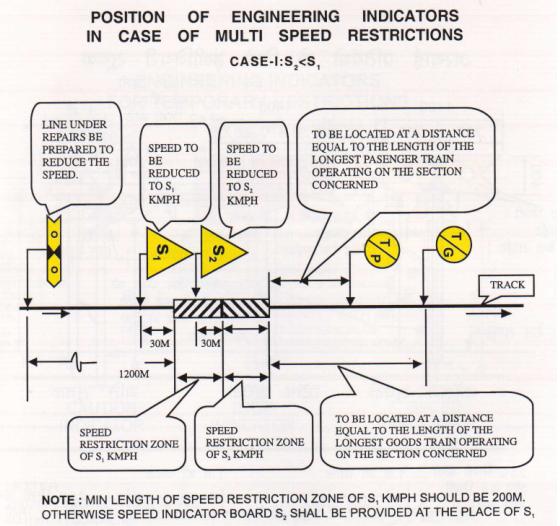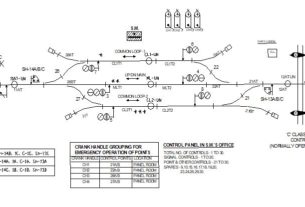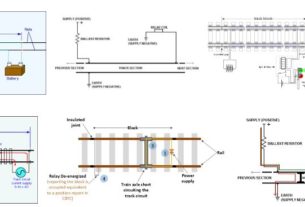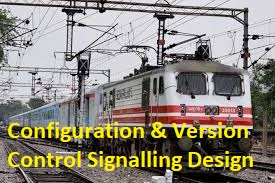PROTECTION OF ENGINEERING WORKS & TRACK SAFETY
Safety is the paramount importance in any Transport system.
1. Safety of traveling public
2. Safety of the staff working and
3. Safety of infrastructure.
4. Irregular working of staff is a threat to safety. Rules are framed for a uniform and systematic working.
5. Unauthorized persons are not permitted at any work site.
Who is the authorized person?
1. One who is competent and authorized by rules.
2. Should be PTS (personal track safety) trained or protected by a COSS (Controller of Site Safety).
3. Should be Inducted for site working.
General Safety
Safety Self and Others with you, Contractors, Public, Passengers, Trains, Accidents, Equipment & Infrastructure, Fire.
Personal safety
* Drugs and Alcohol
* Medical Fitness
* Competency in rules and regulations-
* Obeying Rules and special Instructions
* Communication with other members of the team
* Protecting clothing and equipment-
* Awareness of hazards at site
* Reporting of injuries and accidents
TRACK SAFETY
* You are considered on or near line if you are within 3 meters from the nearest line.
* on a platform this distance is 1.25metres from the platform edge
* Special arrangements are required when the speed of the trains is more than 125 mph.
* Use of mobiles is prohibited, if it endangers you or others working in any way.
* In all cases are emergencies, you are permitted to go without authority or competency
* Do not go near the line unless you have got work to do
* You should be either PTS trained or supervised by a COSS (Controller of Site Safety).
* Permitted to go in all cases of emergency
What you should know
* Right use of equipment
* Signal replacements,
* Track circuit operating clips
* Hand signals, indication boards, detonators
* Use of vehicles and tents near the line
* Working as a group or alone
* Working in electrified lines AC and DC
* Working in tunnels
* Management of accidents
Safety precautions
* Emergency Replacement of Signals:
* Securing the points
* Track circuit operating clips
* Hand signals and Detonators
* Railway Crossings, Gates etc:
* Working of road vehicles near the Rly. lines
* Use of Tents
Danger to trains
* Doors not closed properly
* Insecure load
* Vehicle on Fire
* Hot axle box
* Headlight not lit
* Tail lamp missing or not lit
* Driver sounding distress warning signals or showing a red light or any other such happening
Train Protection
* Information to be given to nearest signal box or to the person in charge.
* If the hazard can be removed, it may be removed, however it should not be attempted when you will be putting yourself in danger.
Line Protection
* Placing of detonators
* Providing Track circuit Operating clips
* Replacement of signals to danger
* Reaching a telephone or signal box etc.
* You must stay at the site until some one takes over from you or your are informed alternative protections are provided.
* Withdraw protection only when instructed
While traveling in trains
* Ensure only authorized persons are traveling in the driving cab.
* Ensure persons in the driving cab are not more than four.
* Ensure only authorized persons are traveling in empty coaching stock trains, Postal or parcels trains
Action during Accidents, Fire and Security
* Secure the train.
* Ensure no other train gets involved
* Get traction current switched off
* Call the emergency services
* You must not carry out tasks that you are not qualified to do.
* You must not put yourself or others in danger
Action during Accidents, Fire and Security
* Locate the emergency equipment
* Give as much information as possible.
* Watch for the arrival of emergency services
* Evacuate the train only when it is absolute necessary
* Advise the passengers to be in a safe place
* Preserve the evidence like driving controls, signaling equipment, rolling stock, line side equipment etc. at a serious accident.
* Report the accident with full details of accident and location
* Must prevent and put out fires in all types of locations
* Any suspicious objects should be reported. Object should not be touched.
* Any explosion is suspected on or near the Railway, it should be reported to the nearest signaler and police.
Communication
* Must know how to use the Communication equipment.
* Make sure you are speaking to the right person
* Make sure you have properly understand the meaning of all safety messages whether they are given by phone, radio or face to face.
* Repeat the messages so the sender can be sure that you have understood the message.
* You must use the prescribed phonetic alphabet.
What is meant by blocking the line ?
When a work needs to be carried out on a running line, that Line should be blocked for train services –
* when the trains running on that line might be affected by the work or
* Any person working on or near the line may be at risk while the trains running on that line.
Blocking in between the trains
* To be planned beforehand
* To be done with least interruptions to trains services
Duties of COSS
* Should make the arrangements for the type of protection agreed upon
* Inform the signaler the arrangements made.



